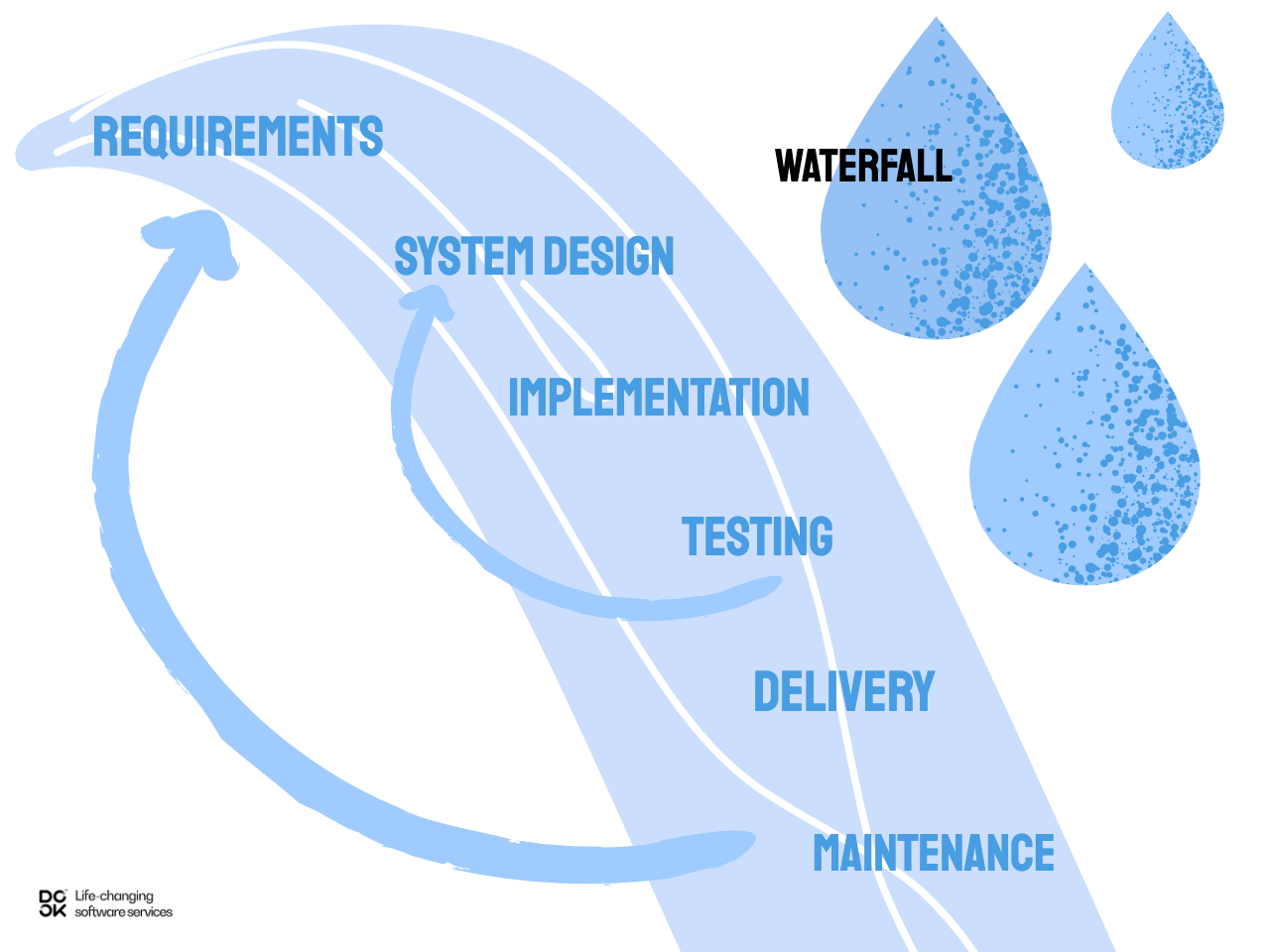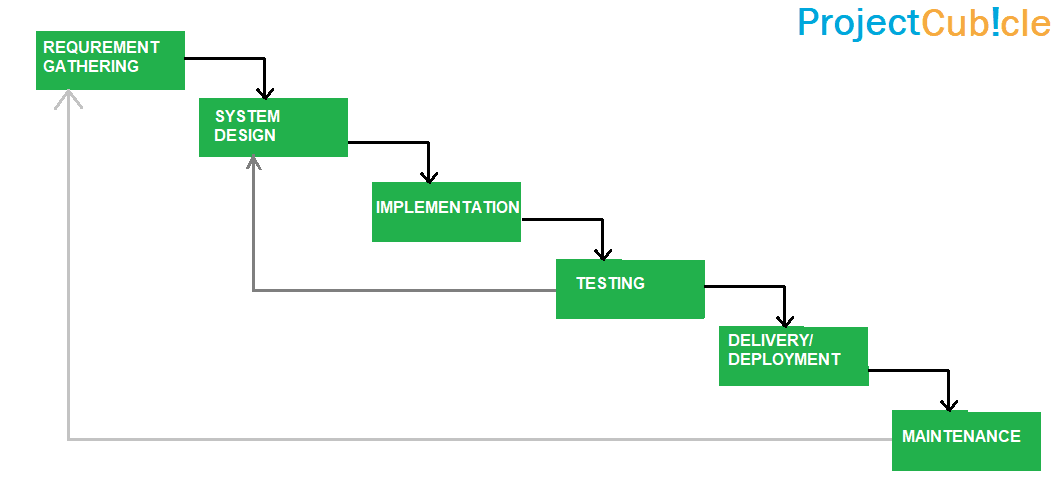

This allows any stakeholders to safely play with the product before releasing it to the market. However, many organizations choose to move the product through different deployment environments such as a testing or staging environment.
#WATERFALL APPROACH SOFTWARE#
Software DeploymentĪt this stage, the goal is to deploy the software to the production environment so users can start using the product. NET, Java, PHP, Node.js, Ruby, and Python.
#WATERFALL APPROACH CODE#
Try Stackify’s free code profiler, Prefix, to write better code on your workstation. In short, we want to verify if the code meets the defined requirements. We fix those issues until the product meets the original specifications.


“Did we get what we want?” In this stage, we test for defects and deficiencies. This will help your team to produce organized and consistent code that is easier to understand but also to test during the next phase. Also, make sure you have proper guidelines in place about the code style and practices.įor example, define a nomenclature for files or define a variable naming style such as camelCase. It’s important that every developer sticks to the agreed blueprint. BuildĪt this stage, the actual development starts. Failure at this stage will almost certainly result in cost overruns at best and the total collapse of the project at worst. It’s crucial to have a plan for collecting and incorporating stakeholder input into this document. All stakeholders then review this plan and offer feedback and suggestions. “How will we get what we want?” This phase of the SDLC starts by turning the software specifications into a design plan called the Design Specification. In other words, the team should determine the feasibility of the project and how they can implement the project successfully with the lowest risk in mind. It also details the risks involved and provides sub-plans for softening those risks. “What do we want?” In this stage of the SDLC, the team determines the cost and resources required for implementing the analyzed requirements. Learn the strengths and weaknesses of the current system with improvement as the goal. “What are the current problems?” This stage of the SDLC means getting input from all stakeholders, including customers, salespeople, industry experts, and programmers. Next, let’s explore the different stages of the Software Development Life Cycle.įollowing the best practices and/or stages of SDLC ensures the process works in a smooth, efficient, and productive way. Be smart and write the right types of tests. Many organizations tend to spend few efforts on testing while a stronger focus on testing can save them a lot of rework, time, and money. As the SDLC is a repetitive methodology, you have to ensure code quality at every cycle. It’s also important to know that there is a strong focus on the testing phase. By anticipating costly mistakes like failing to ask the end-user or client for feedback, SLDC can eliminate redundant rework and after-the-fact fixes. It then creates the software through the stages of analysis, planning, design, development, testing, and deployment. Next, it defines the requirements of the new system. That plan starts by evaluating existing systems for deficiencies. SDLC achieves these apparently divergent goals by following a plan that removes the typical pitfalls of software development projects. SDLC works by lowering the cost of software development while simultaneously improving quality and shortening production time. So, how does the Software Development Life Cycle work? How the SDLC Works Popular SDLC models include the waterfall model, spiral model, and Agile model. The SDLC involves six phases as explained in the introduction. SDLC provides a well-structured flow of phases that help an organization to quickly produce high-quality software which is well-tested and ready for production use. SDLC or the Software Development Life Cycle is a process that produces software with the highest quality and lowest cost in the shortest time possible. What is the software development life cycle? This article will explain how SDLC works, dive deeper in each of the phases, and provide you with examples to get a better understanding of each phase.


 0 kommentar(er)
0 kommentar(er)
